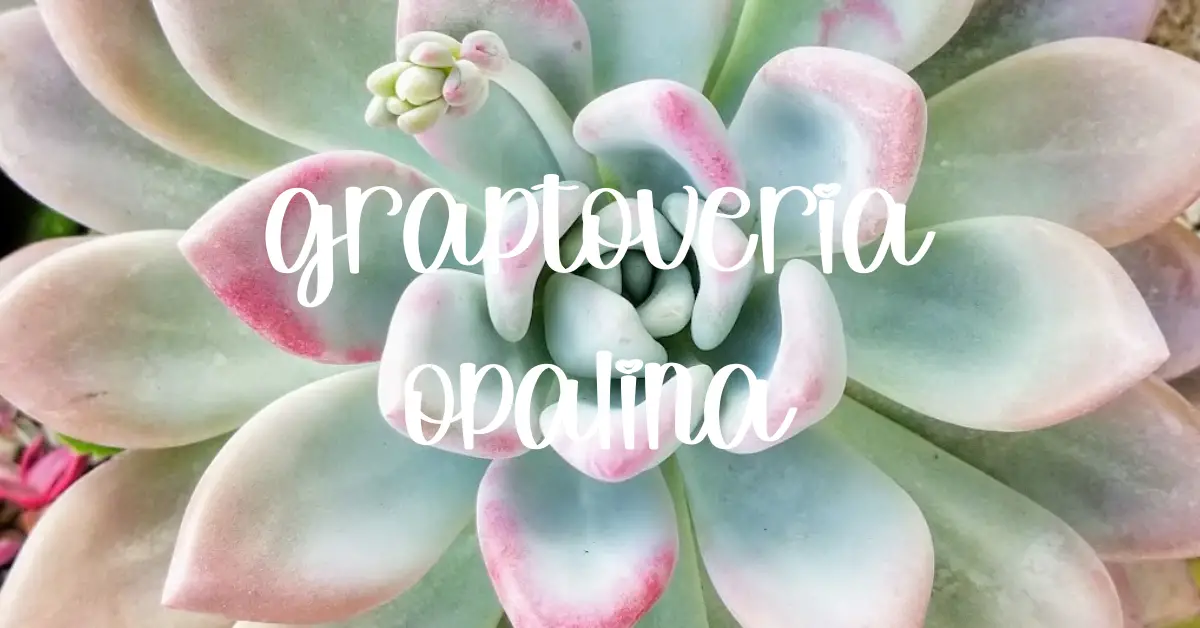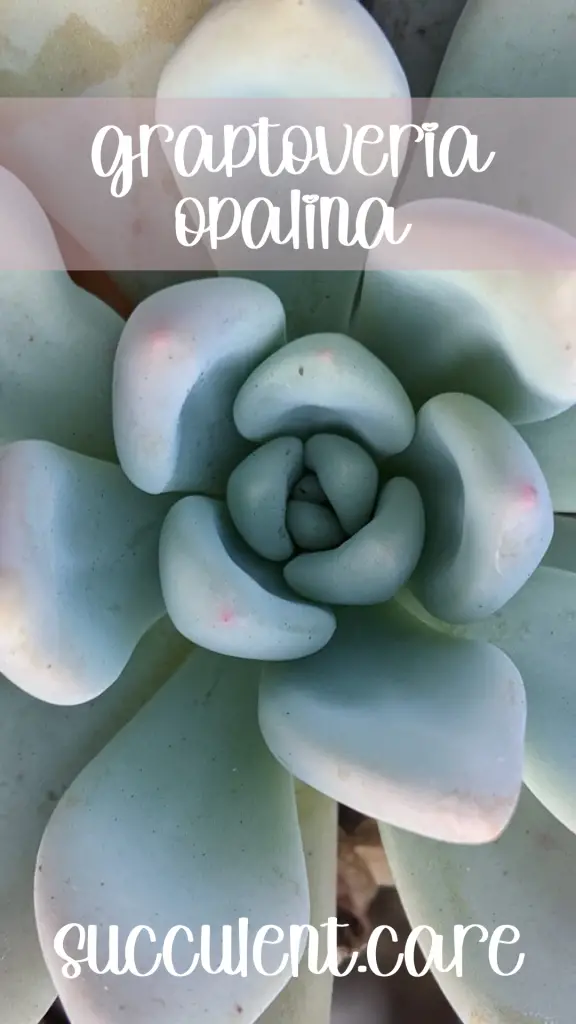Graptoveria opalina, also known as the “Opal Plant,” is a popular succulent that is known for its unique, colorful leaves. These plants are relatively easy to care for and make a great addition to any indoor or outdoor garden. In this guide, we’ll cover the essentials of Graptoveria opalina care, including watering, sunlight, soil, fertilizing, and repotting.

Watering Graptoveria opalina
Graptoveria opalina plants are drought-tolerant and do not require frequent watering. It’s important to let the soil dry out completely between waterings to prevent root rot. A good rule of thumb is to water your Graptoveria opalina once a week, but this can vary depending on the specific needs of your plant and the climate you live in.
You might like: How to Repot Succulents
It’s also important to use a well-draining soil mix and a pot with drainage holes to help prevent overwatering. To check if it needs watering, stick your finger about an inch into the soil. If it feels dry, it’s time to water. If it feels moist, hold off on watering for a few more days.

Sunlight for Graptoveria opalina
Graptoveria opalina plants need plenty of sunlight to thrive, but it’s important not to overdo it. These plants prefer bright, indirect light and it’s best to avoid placing them in direct sunlight for extended periods of time. If you’re unsure how much sunlight it is getting, a good rule of thumb is to check the leaves. When the leaves are starting to look yellow or faded, it’s a sign that it may be getting too much or not enough light.
Choosing the Right Soil for Graptoveria opalina
When it comes to soil for your Opalina plant, it’s important to choose a well-draining mix. These plants do not like to sit in wet soil, so a mix that drains well is crucial to prevent root rot. You can find pre-made succulent soil at most garden stores, or you can make your own by mixing equal parts potting soil, coarse sand, and perlite.


Fertilizing Graptoveria opalina
Graptoveria opalina plants generally do not need a lot of fertilizing, but if you want to give them a little extra boost, a diluted liquid fertilizer can be applied once a month during the growing season. It’s important to use a fertilizer specifically formulated for succulents, as regular fertilizers can be too strong and harm the plants.


Where to Buy Succulents Online
Repotting Graptoveria opalina
Graptoveria opalina plants generally do not need to be repotted very often, but it’s a good idea to check their roots and pot size every year or so. If the roots are getting too crowded or the pot is too small, it’s time for a repot. When repotting, be sure to use a well-draining soil mix and a pot with drainage holes.
Here are some step-by-step instructions for repotting:
- Gather your supplies. You’ll need a new pot with drainage holes, well-draining soil mix, and a small trowel or spoon.
- Remove the plant from its current pot: Gently loosen the soil around the base of the plant and lift it out of the pot.
- Check the roots: If the roots are overcrowded or appear to be circling the root ball, you may need to gently tease them apart.
- Place the plant in the new pot: Fill the bottom of the pot with soil mix and place the plant on top, making sure it is at the same depth as it was in the previous pot.
- Fill in with soil mix: Add soil mix around the base of the plant, gently packing it down as you go.
- Water the plant: Once you’ve finished repotting, give it a thorough watering to help it settle into its new pot.
Conclusion on Graptoveria Opalina care:
By following these tips on watering, sunlight, soil, fertilizing, and repotting, you can keep your Graptoveria opalina healthy and thriving. With a little bit of care, these unique and colorful plants can bring a touch of greenery to any space.

